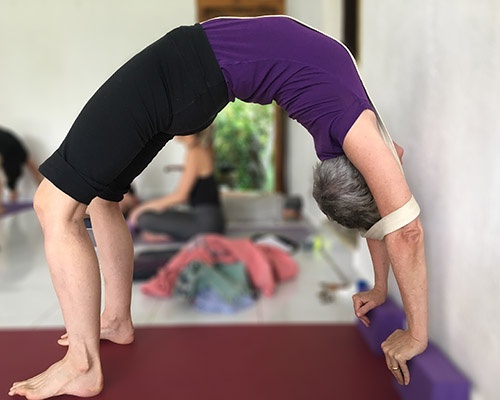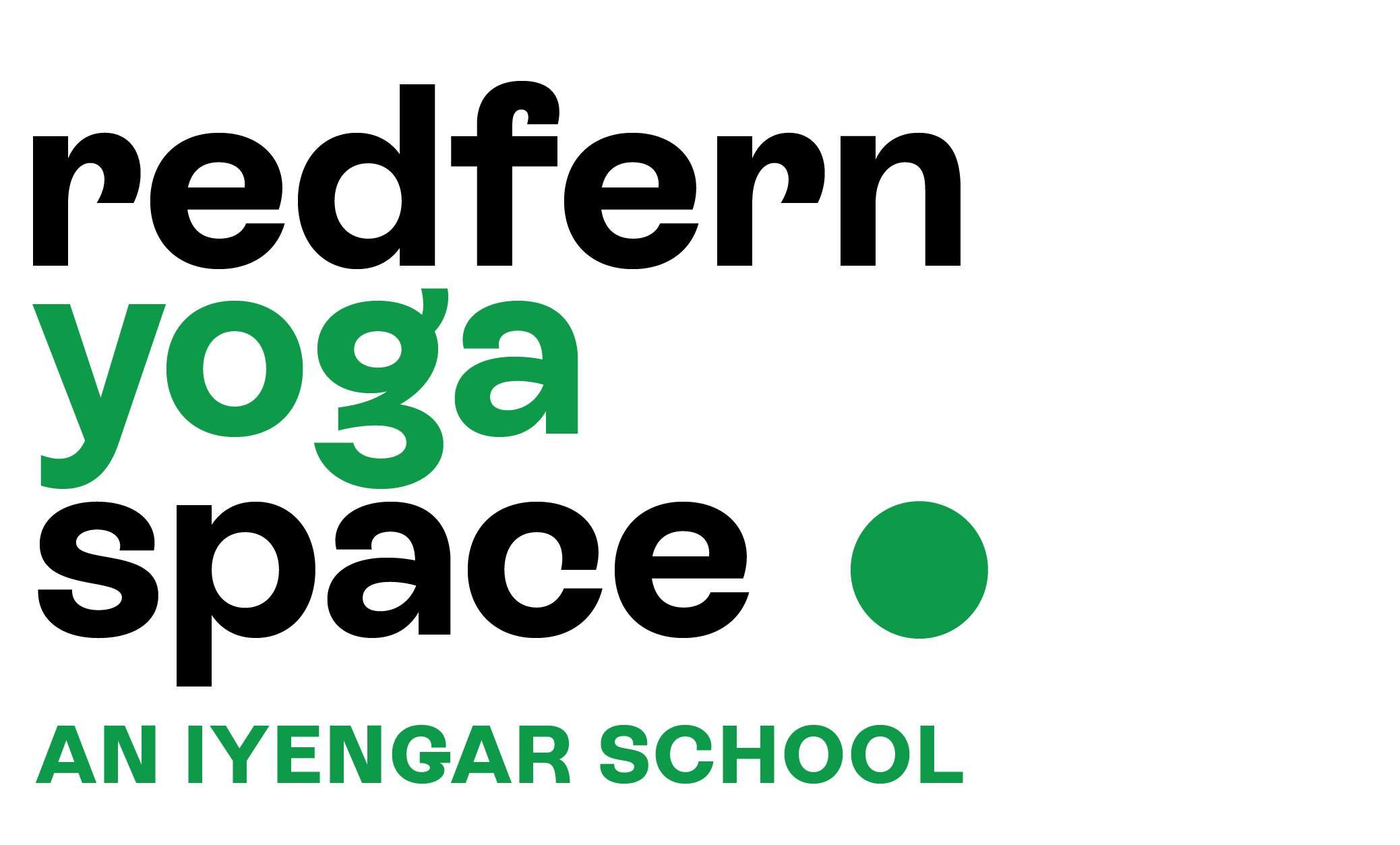


I found yoga in my twenties, stuck religiously to it until my early forties, let it go till my mid-fifties, became a certified teacher in my early sixties, and took on a yoga school when I was almost 70. I guess you could call me an early starter, a mid-life dropout, and a late finisher!
How did you get started? Who taught you and what did you learn from them? Why yoga … what was it about yoga that impacted you in the beginning?
I was introduced to yoga in Japan by Peter Thomson. It was 1980. Peter had been my friend at university, and some years later we were in Japan at the same time. I was studying Japanese and economics; he was pursuing the practice of yoga.
Peter introduced me to my first teacher, Sakashita sensei (‘sensei’ meaning ‘teacher’). Sakashita sensei had been a dancer. He taught a beautiful flowing ‘form’ of yoga where every pose was synchronised with the breath. He said little more than two phrases during class – ‘suinagara’ and ‘hakinagara’ (translated as ‘whilst inhaling’ and ‘whilst exhaling’). I was hooked from the first class, and very soon found myself attending classes every day, sometimes twice a day. From Sakashita I learnt the beauty of movement coordinated with the breath, the simplicity of inhaling and exhaling, the importance of trust and surrender, and the true joyful lightness of savasana after a full practice. It was a magical time in my life and the yoga was truly transformational.
I remember in those early days watching people in the street and wondering how they could possibly do their jobs, think clearly, if they were not doing yoga. That’s how clear headed and perceptive yoga made me feel.
“I remember in those early days watching people in the street and wondering how they could possibly do their jobs, think clearly, if they were not doing yoga. That’s how clear headed and perceptive yoga made me feel.”
Why Iyengar yoga? What do you love about Iyengar yoga?
When I returned to Australia in late 1981, Iyengar yoga was just taking off. It appealed to me greatly. Sakashita’s yoga had been beautiful, deeply meditative, flowing through poses with few words, just the breath. Iyengar yoga was very different. It was technical, rigorous, structured, … not so beautiful, but deep and penetrating. Being young, and with a capable, soft body, this challenge appealed greatly.
I loved the rigour, the technical instructions, the focus on alignment. Finding the line…through the body, the structure of the pose, the line that energy flows through. The technical precision of Iyengar yoga brings a richness and depth of understanding to each pose. It requires the mind to penetrate deeply inside from the gross to the more subtle, to become more sensitive, to pay close attention, to feel deeply, and to stay focussed. When the mind is ‘in the pose’ – feeling, connecting, staying, – mind, body and breath are integrated in that moment. It’s a long journey to come to feel and know this though. And I think in my early years I was in love with the movement, the opening, the energy that doing yoga brought up, the sense of wellbeing that always followed a practice session.
What does Yoga do for you now? Is it still the same as when you started?
It’s different now. Now yoga has deepened into a very rich practice …. now that I am older, I nurture myself more. I have more resistance in my body. I can’t do the advanced poses I used to. But I have a much deeper understanding of the level of connection and sensitivity yoga brings physically and mentally, of its role in nurturing the nervous system, the mental/emotional body and our innermost being. I love being present with myself, ‘feeling’ not thinking, allowing the mind and the body to release, and being there, watching and waiting, …. surrendering. To me yoga is about loving ourselves… bathing ourselves in loving energy, bringing energetic awareness to every cell in the body.
“To me yoga is about loving ourselves… bathing ourselves in loving energy, bringing energetic awareness to every cell in the body.”
More than that though, yoga teaches us about ourselves. It is a reflective practice. We learn to pay attention, to observe, …not just where we have placed our foot, our whether our arms are straight, or whether we are balanced left side, right side, but how we are in life. Whether we are sensitive to others, whether we are oversensitive about ourselves, whether we are living a balanced life, whether we are able to exercise self-discipline, whether we are behaving in line with our values, whether we stand up for what’s important to us, whether we face our fears, … the life lessons from a reflective yoga practice are rich and varied.
Why teaching? What do you love about teaching?
I never wanted to be a teacher. After 15 years away from the mat in my 40s and early 50s I wasn’t even a yoga practitioner, let alone on a path to teaching. I joined the Foundation level classes at Yoga Mandir in Canberra. What a joy it was to be back on the mat! I felt I had come home! Before long I had entered the teacher training program. My application said, ‘I have no desire to be a teacher, I just want to deepen my practice’.…but it doesn’t go like that. Once you are in the program you are expected to teach, and once you taste teaching it’s hard to let it go. Teaching feeds your own practice. You pay more attention, you study more widely, you learn from your students.
And now I find that I love teaching. I think it’s the connection with people – working on the mat together, feeling the energy of people in the room, looking, seeing and teaching to what I see. I love having a laugh with students …not taking things too seriously…. I love seeing arms and legs that are energetically activated, ‘intelligent’ in the yogic sense. It’s very satisfying.
“I love having a laugh with students …not taking things too seriously…. I love seeing arms and legs that are energetically activated, ‘intelligent’ in the yogic sense. It’s very satisfying.”
Teaching has taught me about the diversity of people and the burdens they can be carrying in life. You don’t always know what’s going on for students in your class. You have to trust the process and know that the very act of practicing yoga, helps people with whatever is going on for them. I love hearing from students about how a simple class has resonated with them at just the right moment and brought some freedom or relief from something troubling them.
So yes, there is a lot to love about teaching, but that doesn’t mean it’s easy. If, like me, you have a perfectionist nature it’s easy to feel not good enough. But I am learning to let go of that. As the important teachers in my life have said on more than one occasion, ‘it’s not about the teacher, it’s about the yoga’. Or to put it another way…get on the mat and the mat will look after you.
